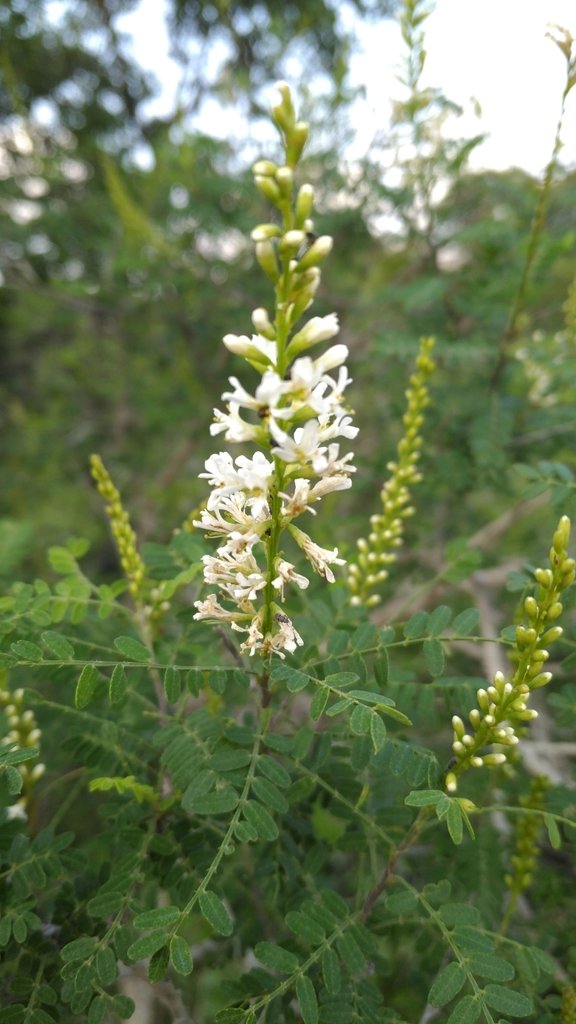Desert Kidneywood
Eysenhardtia orthocarpa
Family: Fabaceae
This is an upright deciduous large shrub or small tree, reaching up to 20’ tall (though usually much shorter in our region), and usually about 10’ wide. Nectar-rich, sweetly fragrant flowers emerge in April-September. Flowers are followed by one-seeded, flat pods that are unusual for a legume (orthocarpa means strange fruit). Finely divided leaves have sunk-in (punctate) glands on the bottoms, and when crushed the leaves are said to smell like tangerine.
Full to part sun, moderate to low water, hardy into the single digits °F.
Sweet smelling flowers attract loads of butterflies, bees, and other insects. This is a larval food plant for following butterflies:
Southern Dogface (Zerene cesonia)
Gray Hairstreak (Strymon melinus)
Ceraunus Blue (Hemiargus ceraunus ssp. gyas)
Arizona Skipper (Codatractus arizonensis)
Seeds provide for some granivorous birds. The upright nature of this tree provides safe nesting and perching habitat for birds.
The wood chips and or leafy branches can be steeped or boiled in water to make tea. This tea can be used for enjoyment and is sometimes used in remedies for kidney and bladder ailments, hence the common name.
When the wood chips are steeped in cold water for a few hours, they confer a blue hue to the water (hence one of its popular names in Spanish, palo azul or “blue stick”). This color can later change to red or amber, according to the incidence of the light. The Spanish physicians first recorded the intense blue fluorescence of kidney wood tea in the sixteenth century. This interesting phenomenon is due to a novel four-ringed chemical compound known as tetrahydromethanobenzofuro[2,3-d]oxacine, which is not found in the intact plant, but rather is the end product of an unusual spontaneous oxidation involving some of the plant’s natural compounds known as flavonoids.
Eysenhardtia orthocarpa on iNaturalist
Eysenhardtia orthocarpa on SEINET
The wood is sturdy and occasionally used for various projects.
Found on rocky and gravelly ridges and along watercourses, often along water courses below 5,500 ft. in southeastern Arizona, southwestern New Mexico; south into central Mexico.
This species is in the Fabaceae (Legume family). There are 13 accepted species of Eysenhardtia.
The genus “Eysenhardtia” is named for Karl Wilhelm Eysenhardt (Carolus Guilielmus Eysenhardt) (1794-1825), German (Berlin) physician, zoologist, naturalist and botany professor. The species epithet “orthocarpa” is from the Greek orthos, meaning "straight," and karpos, which means "fruit," thus "straight fruit, referencing the relative shape of the pod." The common name kidneywood refers to its medicinal use for kidneys and urinal issues.
A similar species, the Texas kidneywood (Eysenhardtia texana) is a somewhat smaller and slightly hardier to the cold, and is sometimes available in the trade. Another species, Eysenhardtia polystachya is a more tropical version of this species, and considered the same species by some authors.



